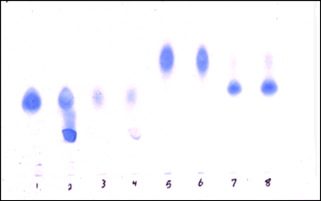Abstract
#Biosurfactants are #amphiphiliccompounds produced,
essentially, by #microbialcells. The production/applications of
biosurfactants are aligned to the green chemistry concept, which
includes antimicrobial (bacteria, fungal, mycoplasma, etc), microbial
enhanced oil recovery (MEOR), and emulsification, among others
[1]. Surfactin, one of the most well-know biosurfactants, was first
found in 1968 by Arima, Kakinuma e Tamura [2]. Currently, there
are a few #surfactin manufacturers as Lipofabrik and Sigma Aldrich
that use mineral salt media for surfactin production. Regarding
surfactin production, the culture medium represents ≈ 30% total
production cost. Thus, some agro-industrial residues have been
investigated as alternative culture medium such as olive mill waste,
brewery wastewaters, sugarcane and beet molasses, whey, cassava
wastewater, etc [3]. In this sense, the cassava processing industry
generates ≈ 300 liters of cassava wastewater/ton of cassava, residue
which currently has not industrial application. Cassava wastewater
contains high minerals (potassium, calcium, magnesium, etc),
carbon and nitrogen concentrations, which allow a good microbial
growth: bacteria, fungi and yeasts.
For more Biomedical open access journals please click on https://biomedres.us/
For more Articles on BJSTR
Agro-Industrial Residues Utilization for #SurfactinProduction: Cassava Wastewater by Cristiano José de Andrade in BJSTR


No comments:
Post a Comment
Note: Only a member of this blog may post a comment.